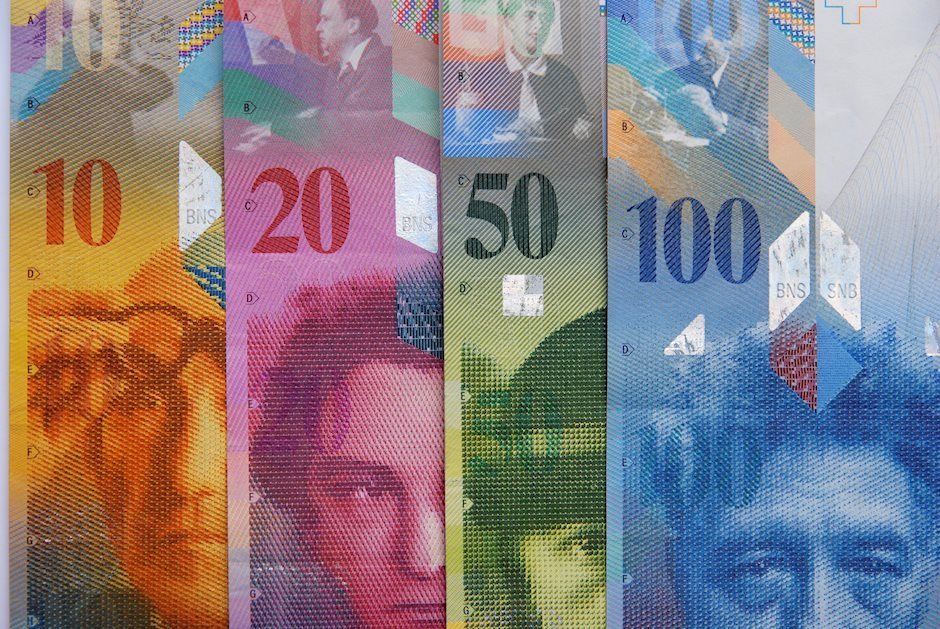USD/CHF advances to its highest level since late July, eyes 0.8900 on stronger USD
- USD/CHF continues gaining positive traction amid relentless USD buying.
- The Trump trade optimism and elevated US bond yields underpin the USD.
- Technical buying above the 200-day SMA contributes to the positive move.

The USD/CHF pair builds on the previous day's breakout momentum above a technically significant 200-day Simple Moving Average (SMA) and gains traction for the fifth successive day on Thursday. This also marks the sixth day of a positive move in the previous seven and lifts spot prices to the 0.8875 region, or the highest level since July 24 during the Asian session.
The US Dollar (USD) prolongs the post-US election rally and jumps to a fresh year-to-date (YTD) peak, and turns out to be a key factor acting as a tailwind for the USD/CHF pair. Investors remain optimistic that US President-elect Donald Trump's policies will spur growth and believe that expected protectionist tariffs could stimulate inflation. This might force the Federal Reserve (Fed) to pause its easing cycle, which continues to underpin the Greenback.
Meanwhile, the US consumer inflation data released on Wednesday reaffirmed bets that the Fed would deliver a third interest rate cut in December against the backdrop of a softening labor market. That said, slower progress toward bringing inflation down could result in fewer rate cuts next year. Adding to this, hawkish remarks by several Fed officials keep the US Treasury bond yields elevated near a multi-month top and further offer support to the buck.
Market participants now look forward to the US economic docket – featuring the release of the usual Weekly Initial Jobless Claims data and the Producer Price Index (PPI). The focus, however, will remain glued to Fed Chair Jerome Powell's speech later during the US session, which will be scrutinized for cues about the future rate-cut path. This will play a key role in influencing the USD price dynamics and provide some meaningful impetus to the USD/CHF pair.
Swiss Franc FAQs
The Swiss Franc (CHF) is Switzerland’s official currency. It is among the top ten most traded currencies globally, reaching volumes that well exceed the size of the Swiss economy. Its value is determined by the broad market sentiment, the country’s economic health or action taken by the Swiss National Bank (SNB), among other factors. Between 2011 and 2015, the Swiss Franc was pegged to the Euro (EUR). The peg was abruptly removed, resulting in a more than 20% increase in the Franc’s value, causing a turmoil in markets. Even though the peg isn’t in force anymore, CHF fortunes tend to be highly correlated with the Euro ones due to the high dependency of the Swiss economy on the neighboring Eurozone.
The Swiss Franc (CHF) is considered a safe-haven asset, or a currency that investors tend to buy in times of market stress. This is due to the perceived status of Switzerland in the world: a stable economy, a strong export sector, big central bank reserves or a longstanding political stance towards neutrality in global conflicts make the country’s currency a good choice for investors fleeing from risks. Turbulent times are likely to strengthen CHF value against other currencies that are seen as more risky to invest in.
The Swiss National Bank (SNB) meets four times a year – once every quarter, less than other major central banks – to decide on monetary policy. The bank aims for an annual inflation rate of less than 2%. When inflation is above target or forecasted to be above target in the foreseeable future, the bank will attempt to tame price growth by raising its policy rate. Higher interest rates are generally positive for the Swiss Franc (CHF) as they lead to higher yields, making the country a more attractive place for investors. On the contrary, lower interest rates tend to weaken CHF.
Macroeconomic data releases in Switzerland are key to assessing the state of the economy and can impact the Swiss Franc’s (CHF) valuation. The Swiss economy is broadly stable, but any sudden change in economic growth, inflation, current account or the central bank’s currency reserves have the potential to trigger moves in CHF. Generally, high economic growth, low unemployment and high confidence are good for CHF. Conversely, if economic data points to weakening momentum, CHF is likely to depreciate.
As a small and open economy, Switzerland is heavily dependent on the health of the neighboring Eurozone economies. The broader European Union is Switzerland’s main economic partner and a key political ally, so macroeconomic and monetary policy stability in the Eurozone is essential for Switzerland and, thus, for the Swiss Franc (CHF). With such dependency, some models suggest that the correlation between the fortunes of the Euro (EUR) and the CHF is more than 90%, or close to perfect.
Author

Haresh Menghani
FXStreet
Haresh Menghani is a detail-oriented professional with 10+ years of extensive experience in analysing the global financial markets.

















